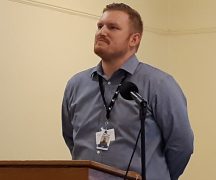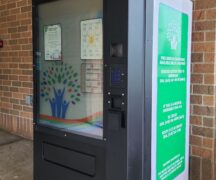By JULIE CARLE
BG Independent News
Mike Jones uses art to tell stories. His distinctive artwork also helps him maintain stability with his bipolar disorder.
For Ian Dawson, stunning metal sculptures and glimmering blown glass became his focus in dealing with depression and recovery from alcohol addiction.
Nancy Oberhaus paints lovely landscapes as a coping skill to deal with post-traumatic stress disorder symptoms.
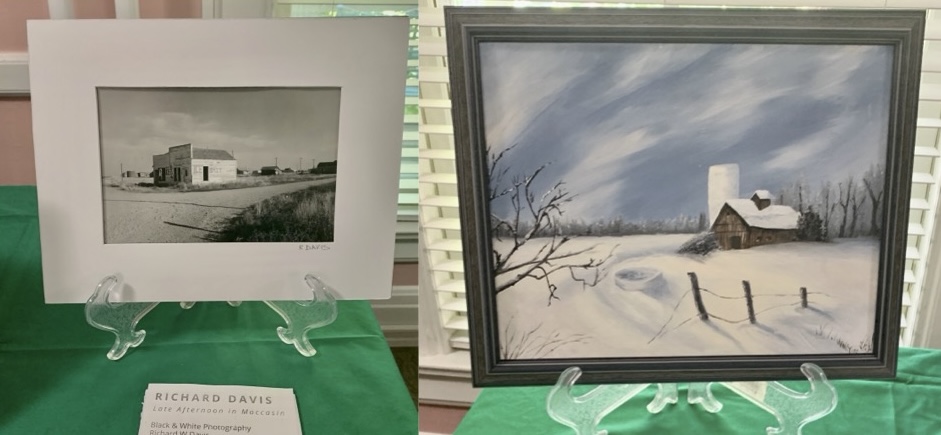
They were among the nearly 40 artists whose work was displayed as part of the inaugural Behavioral Health Art Show, sponsored by the Wood County Alcohol, Drug Addiction, and Mental Health Services (WCADAMHS) Board on Friday (May 24).
Because mental illness and substance use recovery are shrouded in stigma, the show was organized to break down some of those barriers and give individuals living with mental illness or alcohol use disorder a platform for their art, said Kaylee Smith, WCADAMHS marketing and communications manager, and organizer of the event.
“We wanted the whole human experience on display,” she said. “When we say, ‘behavioral health,’ we mean mental illness and substance use recovery, in which there is so much joy and hope, and also pain and hardship. That’s just what being human is.”
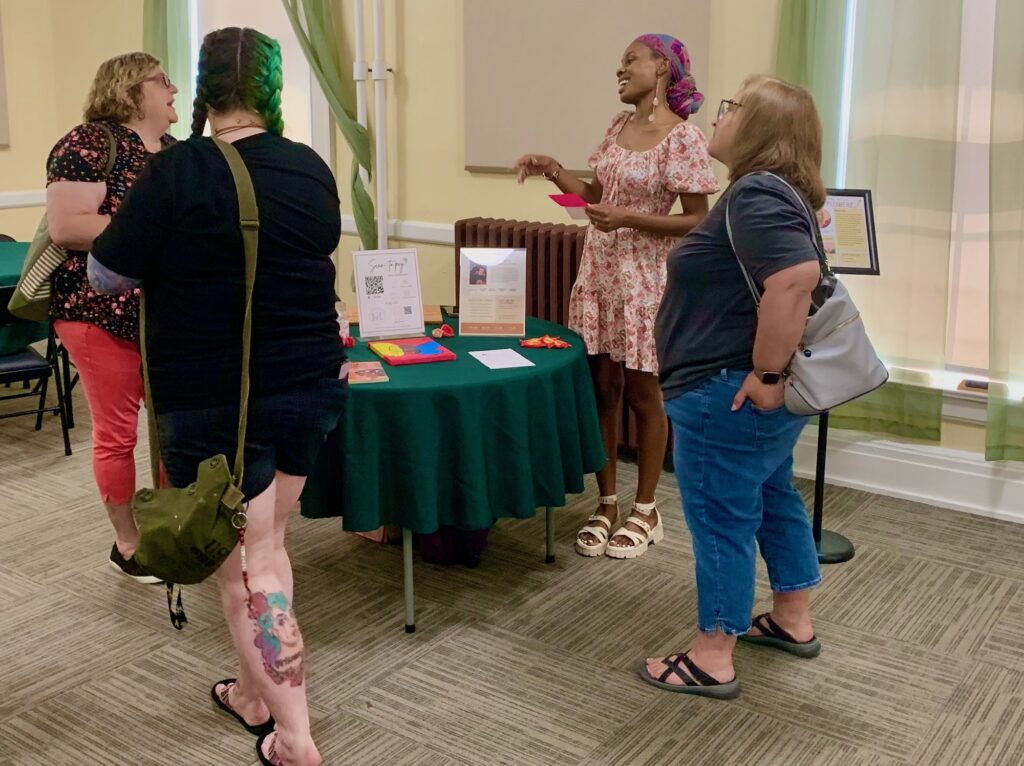
The featured artwork was done “not by ‘those people,’ but just people,” she added. “The show is meant to tell the community that recovery is here; hope is here. It may be a different perspective, but it is still beautiful, wide and hopeful.”
A 5 ½-foot by 6 ½-foot montage by Jones perfectly exemplified “beautiful, wide and hopeful” covering one of the walls at the venue, the Wood County Museum. With 30 square panels depicting various perspectives of daffodils, the artwork was a special project by Jones that started five years ago when he was stuck in a traffic jam. Instead of getting overwhelmed by the situation, he used his iPhone to take photos—160 photos— of a bouquet of daffodils sitting in his truck’s cup holder.
The perspective though is from the back of the flowers, which he found totally intriguing and unique. He imagined the pictures were what an ant might see crawling up a stem or a bee’s perspective as it settled amidst the flowers.
He also created five prototype cubes that sit with the montage to offer spectators the chance to pick them up and interact with the artwork.
“For me, part of living well and living better has been to use each moment as best I can in a meaningful way,” Jones said.
He was diagnosed with bipolar disorder about four years ago, though in hindsight he admitted there were signs prior to the diagnosis. A landscape architect by training, he discovered that the work often overwhelmed him.
“In landscape design, you could easily get a project that was too big and overwhelming. It could be exciting and (I could) become manic, but it’s not sustainable for me,” he said. The landscape work and carpentry work that he was doing “was too hard to escape.”
After two hospitalizations for depression, he needed a different way to deal with his manic-depressive episodes. He joined the art therapy classes at Unison in Toledo.
“Art therapy was very valuable. The work was contained and focused, and it was possible to walk away and move on to a different art project,” Jones said.
His artistic style, across the various media he works in, is meant to tell a story. From one project to the next, the art is also meant to be “a little bit off and also radically different”, similar to what he has had to accept about his own life.
Unlike many of his classmates who are tuned into symmetry, Jones said symmetry makes him nervous.
That is evident in all 15 pieces he displayed in the show, whether the folded paper masterpieces or a collection of end-roll wrapping paper circles with sequins interspersed.
He appreciated the opportunity to showcase his art stories and will continue to create with an eye toward future shows.
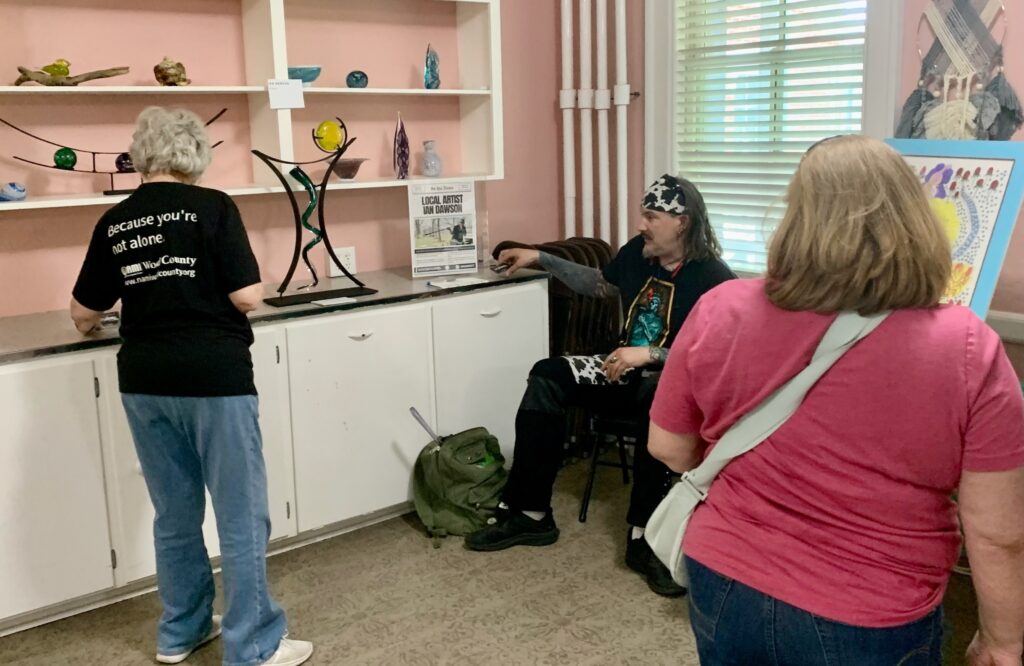
Smith hopes next year’s art show can be an installation for a week or a month during Mental Health Awareness Month in May. The Wood County Museum was a perfect location for the first-time show, she said. “Not only were the museum staff great to work with, but the museum gave the artists a true art experience by giving them title cards, their own space and the opportunity to say, ‘I’m in an art gallery,’” Smith added.
The art show was sponsored by the Wood County Alcohol, Drug Addiction and Mental Health Services Board, “but the art show doesn’t happen without the artists,” Smith said. “This was their event. Everything that it is and everyone coming in belongs to them.”


